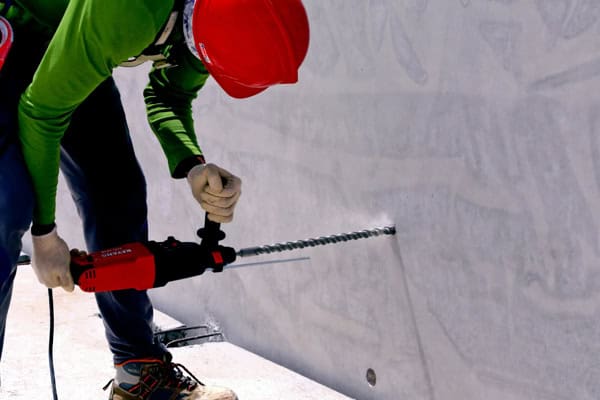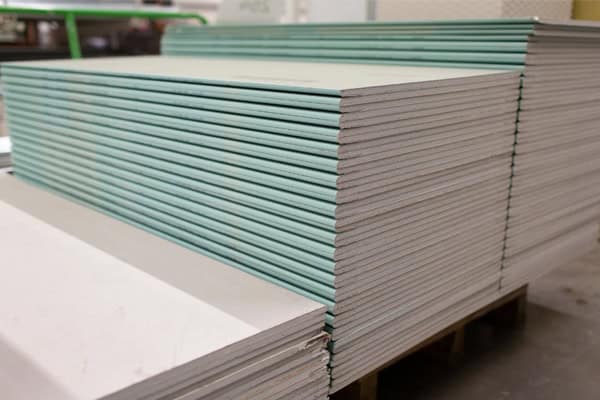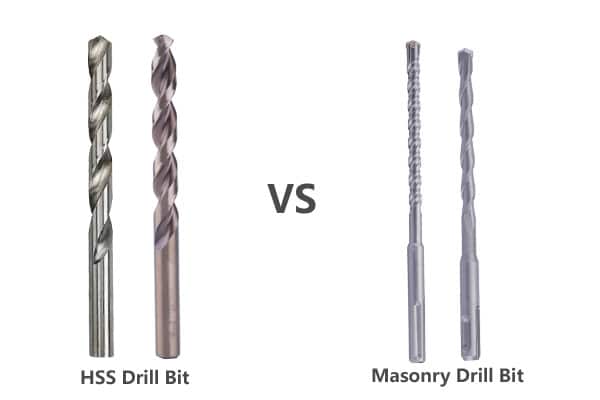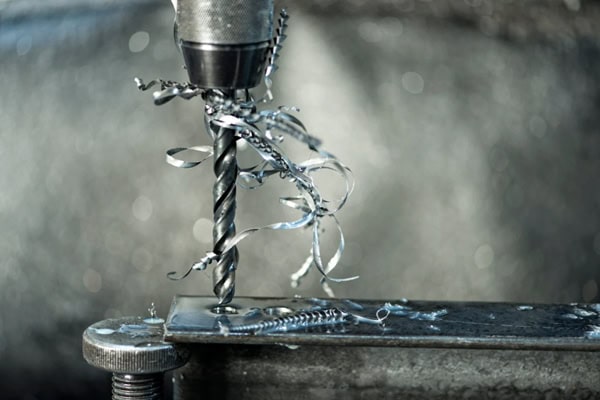Ever grabbed the nearest drill bit, hoping it’ll power through that brick wall? Let’s face it, we’ve all been there. But is that HSS bit really up to the task?
In short, no, you shouldn’t use an HSS (High-Speed Steel) drill bit for masonry. HSS bits1 are designed for softer materials like wood, plastic, and metal. Masonry requires specialized bits with carbide tips2 to withstand the abrasive nature of brick, concrete, and stone.

Ready to dive deeper and understand why? Keep reading, and I’ll explain the key differences and what happens if you try to use the wrong bit.
What is a Masonry Bit? Can you Use it on Drywall?
Ever wondered what makes a masonry bit different from the rest? Or if you can use it on drywall in a pinch?
A masonry bit is designed with a tungsten carbide tip, which is much harder than the steel used in HSS bits. This allows it to slowly grind through hard, abrasive materials3 like brick, concrete, and stone. Also, you can use masonry bits on drywall, but it’s not ideal. The hard tip can tear the paper facing of the drywall4.

So, what makes masonry bits so special? Let’s take a look at the design features.
Masonry Drill Bit Design Features
| Özellik | Tanım |
|---|---|
| Carbide Tip | Made of tungsten carbide, which is extremely hard and wear-resistant, allowing it to grind through masonry. |
| Wider Tip | Prevents the bit from jamming in the hole. |
| Spiral Flutes | Designed to efficiently remove dust and debris from the hole, preventing clogging and overheating. |
| Darbeli Matkap | Masonry bits are often used with hammer drills, which provide a pounding action to aid penetration. |
I remember one time when I was trying to hang a heavy mirror on a brick wall. I started with a regular HSS bit, and it barely made a dent. After switching to a masonry bit and a hammer drill, it went through like butter!
Can you Use a Concrete Drill Bit for Metal?
Thinking of using that concrete drill bit for a metal project? Let’s pump the brakes for a second.
Generally, it’s not recommended to use a concrete drill bit for metal. Concrete bits are designed to grind through brittle materials, while metal requires a shearing action5. Using a concrete bit on metal will likely result in a dull bit and a poorly drilled hole.

So, what are the potential issues? Let’s break it down:
Issues with Using Concrete Bits on Metal
| Issue | Tanım |
|---|---|
| Dull Bit | The hard carbide tip is designed for abrasion, not shearing. It will quickly dull when used on metal. |
| Poor Hole Quality | The hole will likely be ragged and uneven, not suitable for precise applications. |
| aşırı ısınma | The bit may overheat due to friction, potentially damaging both the bit and the metal. |
| Safety Concerns | The bit could potentially break or shatter, posing a safety hazard. |
I once tried to use a concrete bit on a metal fence post, and it was a disaster. The bit skated all over the surface, made a horrible screeching noise, and barely made a dent before it was completely useless.
What Can be Used to Cut through Metal?
Need to slice through some metal but not sure where to start?
There are several tools you can use to cut through metal, each with its own strengths and weaknesses. Some common options include angle grinders, hacksaws, circular saws, and plasma cutters. The best choice depends on the type of metal, the thickness, and the desired cut quality.

Let’s take a look at the options:
Metal Cutting Tool Options
| Tool | Tanım |
|---|---|
| Angle Grinder | Versatile tool for rough cuts, removing seized hardware, and cutting welds. Uses abrasive cutoff wheels. |
| Demir testeresi | Inexpensive and popular for straight cuts in pipes, metal stock, and heavier gauge sheet metal. Requires elbow grease. |
| Dairesel testere | Can be adapted for metal cutting with the right blade (carbide tooth or steel tooth). Best for sheet metal. Requires coolant and PPE. |
| Plasma Cutter | Powerful machines designed for precision metal cutting, especially for thick materials and complex shapes. More expensive than other options. |
| Metal Shears | Hand tools for cutting sheet metal and thin metal stock. Ideal for intricate metalwork with minimal distortion. |
When I first started working with metal, I relied heavily on a hacksaw. It took some effort, but it got the job done. Later, I invested in an angle grinder, and it made cutting metal so much faster and easier.
Do Masonry Drill Bits Get Blunt?
Ever noticed your masonry bit isn’t drilling like it used to? Are they meant to last forever?
Evet, masonry drill bits do get blunt over time. The constant abrasion against hard materials6 like brick and concrete wears down the carbide tip7. When this happens, the bit becomes less effective and requires more force to drill.
But how do you know when it’s time for a new bit?
Signs of a Blunt Masonry Drill Bit
| Sign | Tanım |
|---|---|
| Slower Drilling | The bit takes longer to penetrate the material, even with consistent pressure. |
| Increased Pressure | You need to apply more force to achieve the same drilling speed. |
| aşırı ısınma | The bit overheats quickly due to increased friction. |
| Dust Cloud | More dust is produced, indicating the bit is grinding rather than cutting. |
I’ve learned the hard way that trying to push a dull masonry bit only leads to frustration and potentially damaging the drill. It’s always better to replace the bit and get the job done efficiently.
Çözüm
So, can you use an HSS drill bit for masonry? Definitely not! Using the right tool for the job not only makes your work easier but also ensures better results and extends the life of your tools.
-
Explore this link to understand the applications and benefits of HSS bits in various materials. ↩
-
Learn about the significance of carbide tips in enhancing the durability and performance of masonry bits. ↩
-
Learn about the types of hard abrasive materials and their significance in construction and manufacturing processes. ↩
-
Discover the best practices for drilling into drywall to avoid damage and ensure a clean finish. ↩
-
Learn about shearing action and its importance in metal drilling to improve your drilling techniques and outcomes. ↩
-
Exploring this topic can provide insights into material wear and maintenance in construction projects. ↩
-
Understanding carbide tips can enhance your knowledge of tools used in construction and their durability. ↩